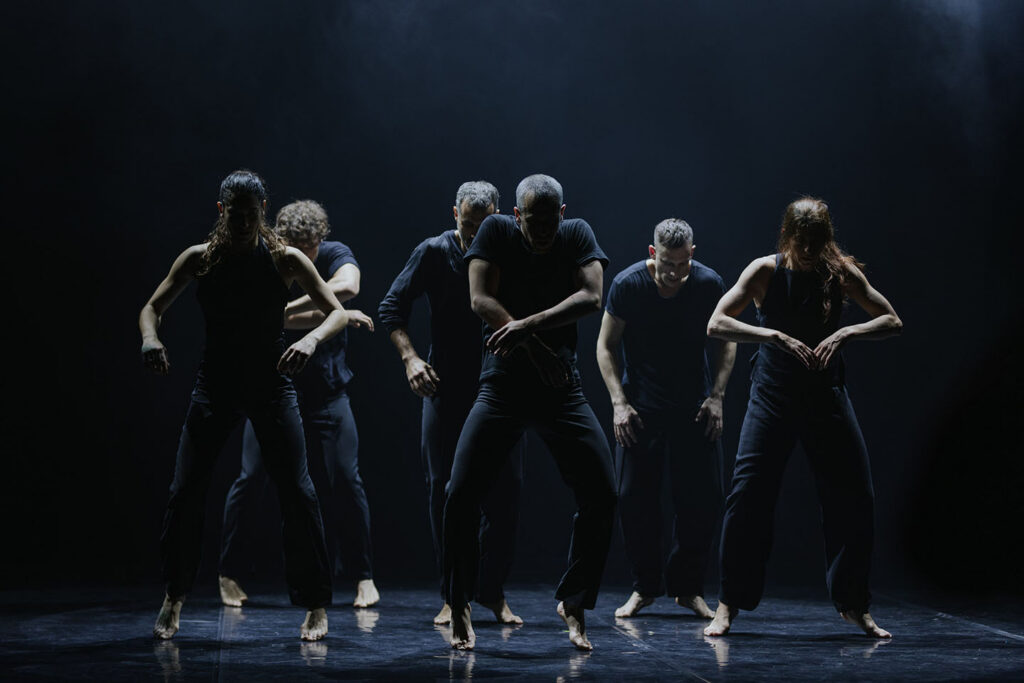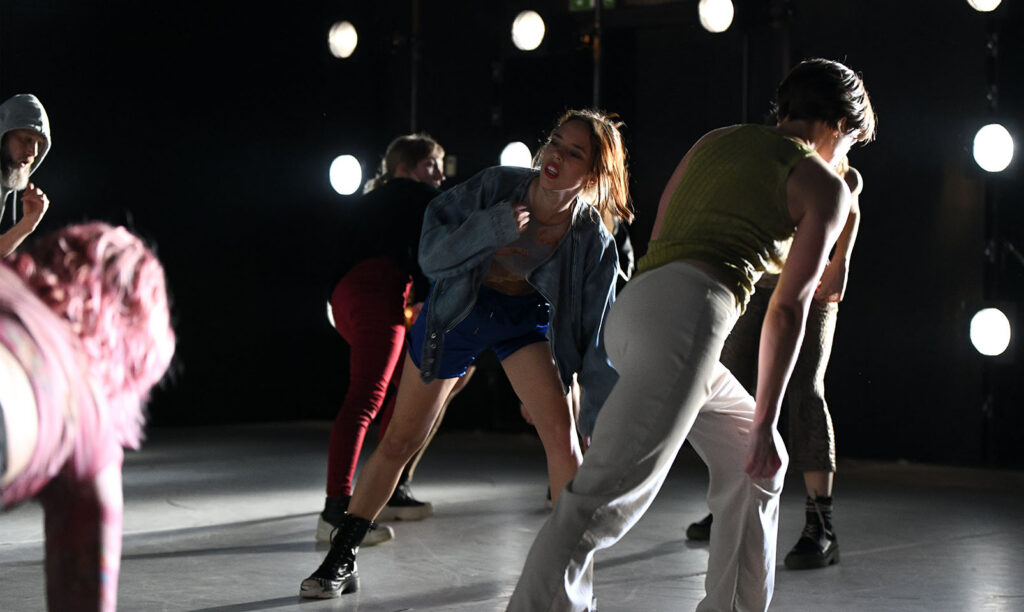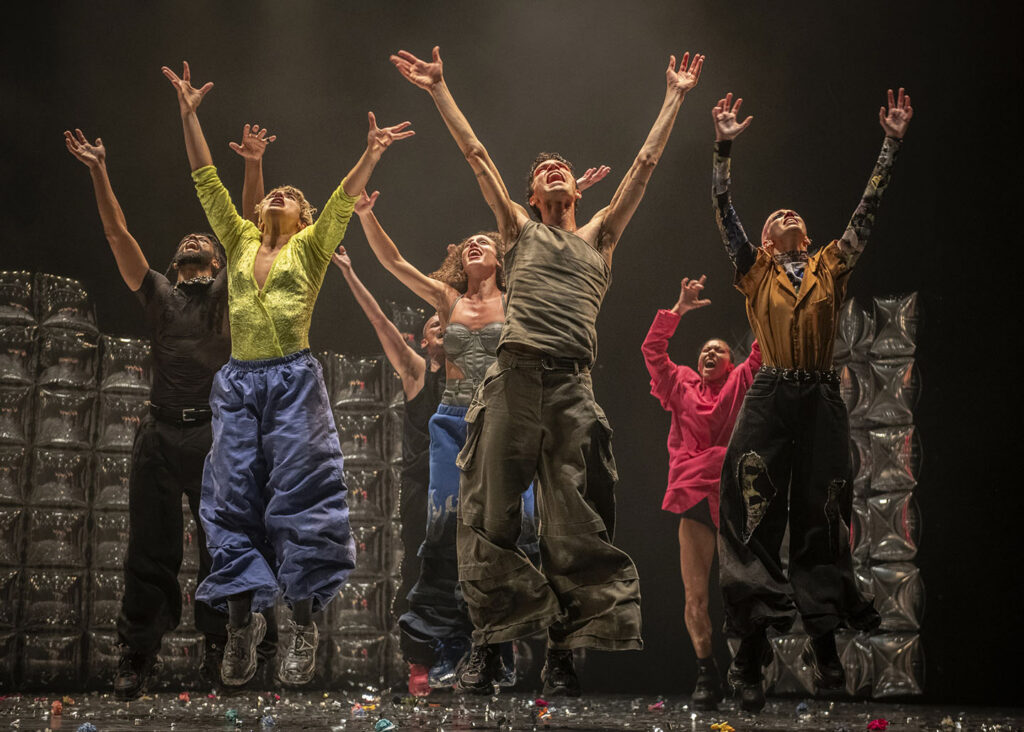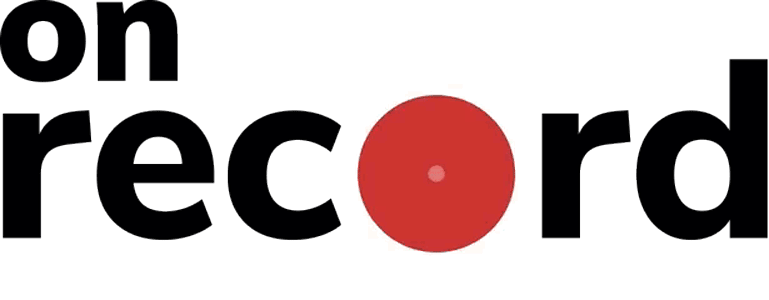


When talking to guests and participating artists at Moving Balkans, it’s clear that communication – and the feeling of not being heard – was on many people’s minds. At the opening ceremony, Atanas Maev, the General Manager of Moving Balkans, pointed out that the platform was created after realising the Balkans were not represented at the annual Tanzmesse in Düsseldorf years ago. Greek choreographer Patricia Apergi also shared over aperitifs that Balkan artists often feel a sense of “non-visibility”. A North Macedonian journalist even told me that Bulgaria’s refusal to recognise Macedonian as a separate language is one of the main reasons Bulgaria continues to block North Macedonia’s application to join the European Union. That tension came into sharp focus when an argument broke out during a bus-ride quiz about which country invented the Cyrillic alphabet.
This theme of silencing and struggling for visibility didn’t only surface through conversations, but also through several works in Moving Balkans’ programme. Given its title, Greek choreographers Linda Kapetanea and Jozef Fruček’s piece Silence seems like the obvious first example. In the programme note, the choreographers frame silence as something positive and powerful – something we’ve lost amid the relentless noise of modern life, and perhaps a space to invite people to say what they need. At the beginning of the work, a lone male performer, dressed in a stiff, military costume, attempts to recount a story about his father directly to the audience. But he stumbles over his words, loses his train of thought, and makes less and less sense, his gestures becoming panicked and erratic as if frustrated by his inability to communicate.
Shortly after this failed attempt to speak, the incessant noise of the world he’s up against is represented by four performers thwacking ropes – stretched across the stage in a long diagonal – against the floor, creating a blurred wave of motion and a relentless hammering, like heavy rain in a storm. If that lone performer knew this roar was coming – and that it was the wall he’d have to shout over – I don’t blame him for faltering. Who could think, let alone raise their voice to be heard, above that din?
A collage of striking, fragmented images emerges throughout Silence, many difficult to piece together, but some clearly echoing this theme. In one moment, a woman’s limbs are manipulated and contorted into uncomfortable positions by two men on what resembles an interrogation table, hinting at a world where speaking up and being heard can have grim consequences. That threat seems to come true: later, she is wrapped in black plastic and carried offstage, suggesting she’s being disposed of. Towards the end of the piece, another performer wrestles with sheets of coloured fabric that envelop her entire body, pulling back each layer as if struggling to break free. Her featureless face presses against the material, a spirit screaming silently into the ether, yearning to say something.
There’s a similar yearning throughout many other works: Simone Aughterlony and Saša Božić’s (from Switzerland and Croatia, respectively) Agenda begins with a seemingly simple stepping pattern performed by a large group to pulsating beats – almost like a techno folk dance. But in its second half, it descends into individual journeys: performers don fetish gear and mount a suspended swing, strip naked, and spew blue liquid from their mouths. One expressionless performer holds up a laptop screen that reads, “Hey, you, just ignore all these other fuckers, I’m all you need.” It feels impossible to obey that command or focus on what they’re trying to say amid the visual noise. The aggressiveness of the laptop language, featuring many “c*nt” peppered sentences, also clashes sharply with the performer’s blank face. It’s reminiscent of how “keyboard warriors” unleash vitriol online, yet in real life sit alone and (e)motionless in their bedrooms.
In contrast, there’s a shyer energy at points in Patricia Apergi’s The House of Trouble. Several characters tentatively approach a dangling microphone. “How do I say this? You’ve paid, so I’ll do anything to please you,” one eventually manages to get out through multiple stops, starts, and stutters reminiscent of the opening monologue in Silence. Their struggles to speak, however, seem offset by the fact that in other scenes the cast expresses themselves articulately through choreography – flamboyant walks and explosive chest pumps referencing krumping – and outlandish 90s club kid style fashion. Perhaps the only problem here is that the dancers are being expected to speak another language besides their mother tongue: movement.
Bozkuş Al’s work shows that while bodies can be augmented, disguised, or even digitised, metamorphosis remains an innately human act – one we carry within us through every stage of life, whether chosen or imposed, and whether it brings beauty, pain, or both.



